Navigating the Intersection of Technology and Business: 10 Most Impactful Trends for 2024
Navigating the Intersection of Technology and Business has become a critical focus for organizations in 2024. The rapid evolution of technology continues to reshape the world of business, offering both unprecedented opportunities and significant challenges. As companies face an increasingly competitive landscape, the integration of cutting-edge technology is no longer optional—it is essential for survival and growth.
Businesses that adapt to these technological advances can gain a critical advantage over their competitors, while those that fail to evolve may find themselves left behind. To thrive in this environment, it is crucial for organizations to effectively navigate the intersection of technology and business, leveraging innovation to stay ahead.
In this article, we explore the most impactful trends at the intersection of technology and business, offering deep insights into how organizations can leverage innovation to drive growth, improve efficiency, and stay ahead of the competition.
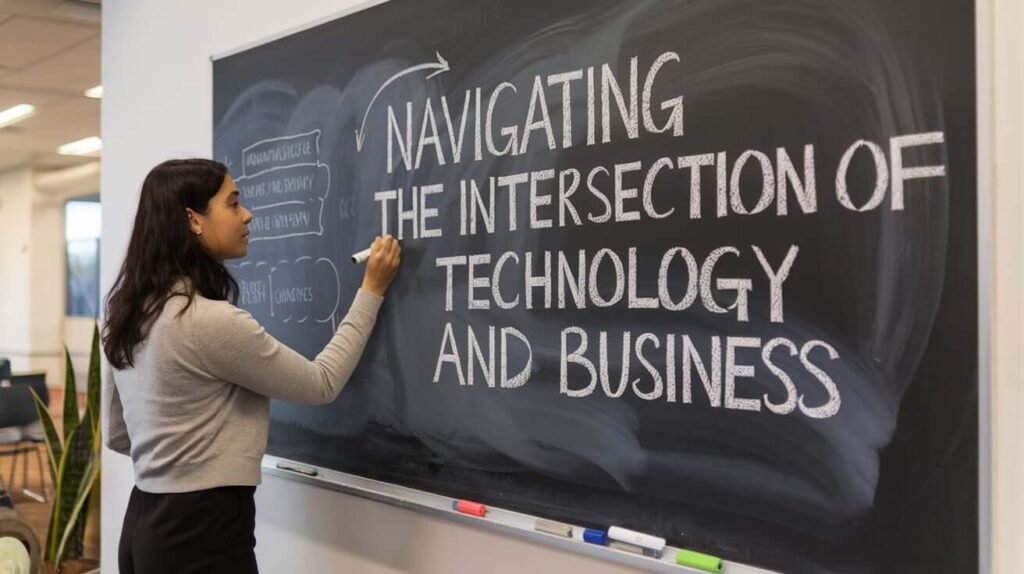
Table of Contents
- 1. The Role of Artificial Intelligence in Business Operations: Navigating the Intersection of Technology and Business
- 2. Cloud Computing and Business Agility: Navigating the Intersection of Technology and Business
- 3. The Rise of Blockchain in Business
- 4. The Internet of Things (IoT) and Data Integration: Navigating the Intersection of Technology and Business
- 5. Cybersecurity: A Top Priority for Business Leaders
- 6. Sustainability and Technology: A Growing Business Mandate
- 7. 5G and Business Connectivity: Navigating the Intersection of Technology and Business
- 8. The Future of E-Commerce: Personalization and Immersive Experiences
- 9. Digital Payments: The Shift Towards a Cashless Economy
- 10. Preparing for the Future: Embracing Technological Change
- Final Thoughts: Navigating the Intersection of Technology and Business
- Navigating the Intersection of Technology and Business: Frequently Asked Questions (FAQs)
- 1. How is Artificial Intelligence (AI) impacting business operations in 2024?
- 2. What role does cloud computing play in business agility?
- 3. How does blockchain benefit supply chain management?
- 4. What is the significance of 5G technology for businesses?
- 5. How are automation and robotics affecting businesses in 2024?
- 6. What trends are driving the future of e-commerce?
- 7. What cybersecurity challenges do businesses face in 2024?
- 8. How is technology contributing to business sustainability?
- 9. What is the future of digital payments?
- 10. Why should businesses invest in emerging technologies?
1. The Role of Artificial Intelligence in Business Operations: Navigating the Intersection of Technology and Business
Artificial Intelligence (AI) has emerged as a game-changing force across various industries. In 2024, AI-driven solutions are not only automating repetitive tasks but also transforming decision-making processes. Businesses are increasingly relying on AI to analyze vast amounts of data, uncover patterns, and provide actionable insights in real time.
From predictive analytics in marketing to AI-powered chatbots enhancing customer service, the applications of AI are vast. Companies that invest in AI solutions can optimize their supply chains, improve customer experiences, and streamline internal processes. Furthermore, the rise of Generative AI has opened new doors in content creation, enabling businesses to produce more personalized marketing campaigns and automate certain creative processes.
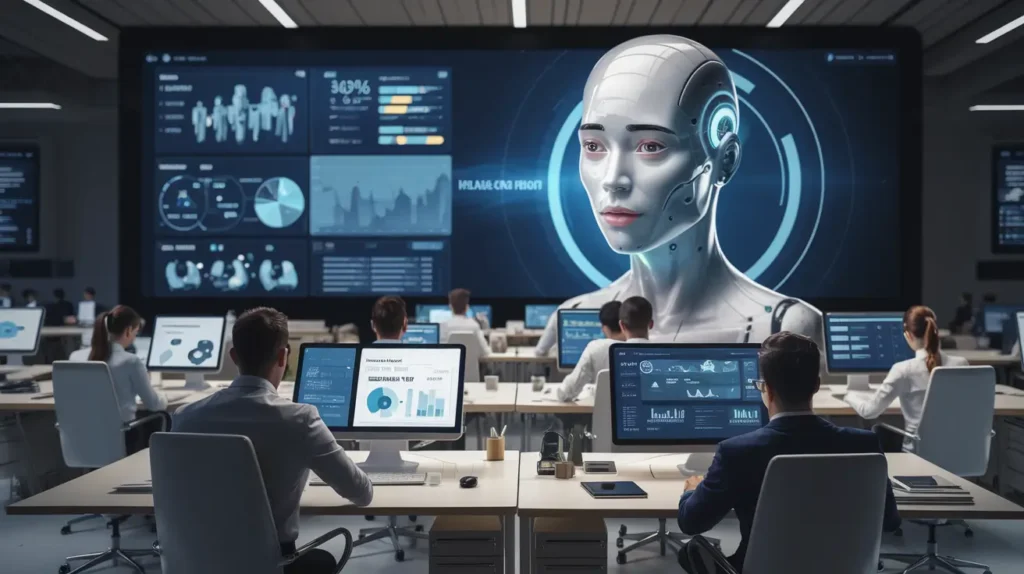
AI in Financial Services
In the financial sector, AI is revolutionizing how companies handle fraud detection, risk management, and customer relationship management (CRM). With advanced machine learning algorithms, financial institutions can detect fraudulent activities in real-time, significantly reducing the risk of financial losses. Meanwhile, AI-driven CRMs are helping businesses provide more personalized customer service, increasing client satisfaction and retention.
AI and Predictive Maintenance in Manufacturing
In manufacturing, AI has played a crucial role in predictive maintenance, allowing companies to predict when machines will fail before they actually break down. This minimizes downtime and ensures that production remains uninterrupted, enhancing overall operational efficiency.
2. Cloud Computing and Business Agility: Navigating the Intersection of Technology and Business
Another critical technology that is fundamentally transforming businesses in 2024 is cloud computing. The ability to store and access data remotely has revolutionized how businesses operate, enabling greater flexibility and collaboration. Cloud-based solutions provide organizations with the agility to scale operations quickly, reduce overhead costs, and improve disaster recovery efforts.
Cloud and Remote Work
The adoption of remote work has accelerated significantly due to advances in cloud computing. Companies now have the infrastructure in place to support a hybrid workforce, where employees can collaborate seamlessly regardless of their geographical location. This shift towards remote work is not only reducing the cost of office space but also increasing employee satisfaction by offering greater work-life balance.
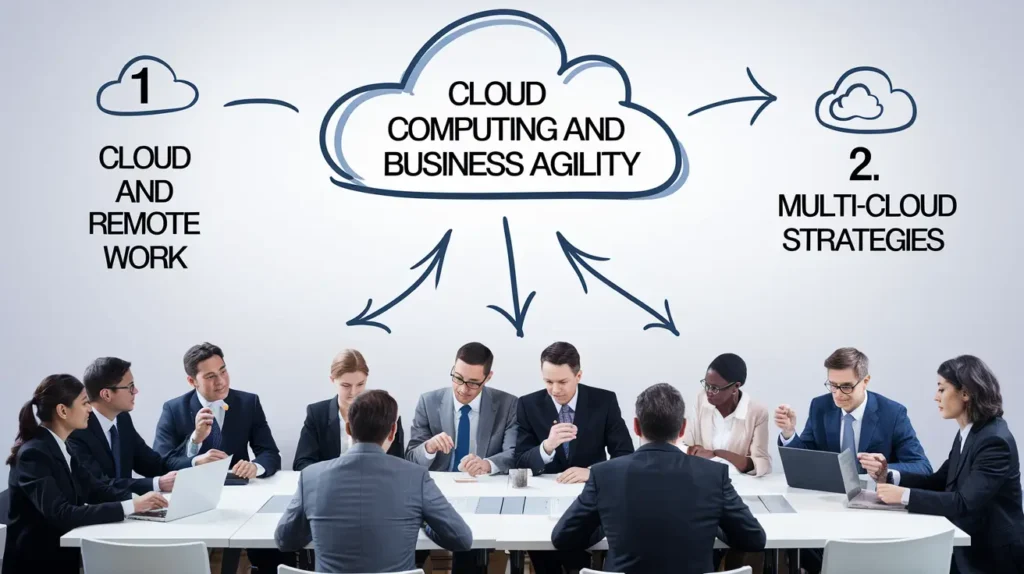
Multi-Cloud Strategies
As businesses become more reliant on cloud-based services, many are adopting multi-cloud strategies. This involves using multiple cloud providers to avoid vendor lock-in, reduce downtime, and increase data security. By leveraging a multi-cloud environment, businesses can ensure that they remain agile, flexible, and protected from potential service disruptions.
3. The Rise of Blockchain in Business
In 2024, blockchain technology continues to gain traction across industries, far beyond its initial association with cryptocurrencies. The decentralized nature of blockchain offers businesses enhanced security, transparency, and efficiency in various applications.
Blockchain in Supply Chain Management
One of the most promising applications of blockchain is in supply chain management. By using a decentralized ledger, businesses can track the movement of goods from production to delivery, ensuring complete transparency at every stage. This not only reduces fraud and errors but also provides consumers with greater confidence in the authenticity of the products they purchase.
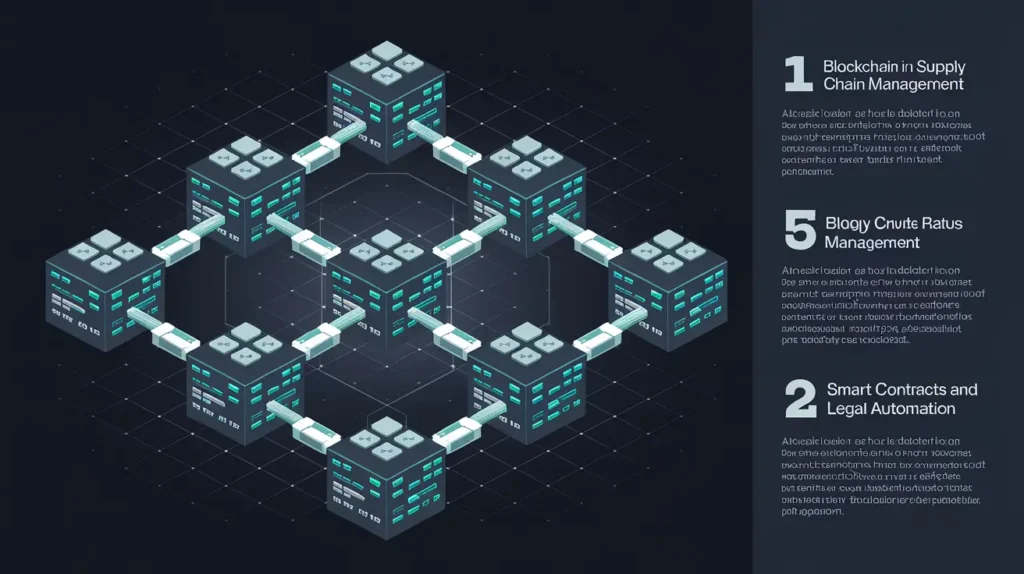
Smart Contracts and Legal Automation
Another key innovation is the rise of smart contracts, which are self-executing contracts with the terms of the agreement written directly into code. These contracts automate various business processes, reducing the need for intermediaries and ensuring that transactions are executed seamlessly. For businesses, this means reduced costs, faster processing times, and fewer disputes.
4. The Internet of Things (IoT) and Data Integration: Navigating the Intersection of Technology and Business
The rapid increase in Internet of Things (IoT) devices is leading to an explosion of data, offering businesses new ways to enhance their operations. By collecting data from connected devices, companies can gain deeper insights into customer behavior, optimize processes, and improve product offerings.
IoT in Retail
In the retail industry, IoT is enabling businesses to create more personalized shopping experiences. Smart shelves can track inventory in real-time, while connected devices can provide tailored product recommendations to customers based on their preferences and past purchases. Retailers that integrate IoT into their operations can improve customer satisfaction and boost sales.
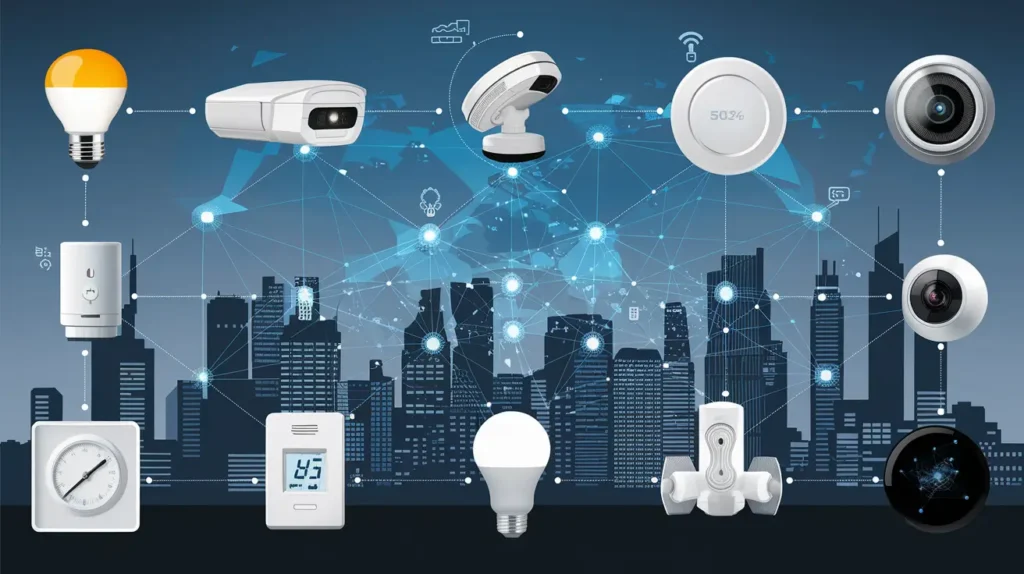
IoT and Predictive Analytics
The vast amount of data generated by IoT devices is being harnessed by businesses to enhance predictive analytics. By analyzing this data, companies can forecast demand, optimize supply chains, and anticipate potential issues before they arise, ultimately leading to more informed decision-making.
5. Cybersecurity: A Top Priority for Business Leaders
As businesses become increasingly reliant on technology, the need for robust cybersecurity measures has never been greater. In 2024, cyber threats are more sophisticated and frequent, making it essential for businesses to invest in comprehensive security solutions to protect their data and infrastructure.
Cybersecurity and Remote Work
With the rise of remote work, businesses face new cybersecurity challenges. The increased use of personal devices and home networks can create vulnerabilities that hackers may exploit. To mitigate these risks, companies are investing in Zero Trust Security models, where every access request is authenticated, authorized, and encrypted before granting access to resources.

Data Privacy Regulations
In addition to cyber threats, businesses must also navigate a complex landscape of data privacy regulations. Compliance with laws such as the General Data Protection Regulation (GDPR) and California Consumer Privacy Act (CCPA) is essential for avoiding costly fines and maintaining customer trust. Companies that prioritize data protection will not only safeguard their operations but also enhance their brand reputation.
6. Sustainability and Technology: A Growing Business Mandate
In 2024, businesses are increasingly integrating sustainability into their operations, driven by both regulatory requirements and consumer demand. Technology is playing a pivotal role in helping companies achieve their sustainability goals, from reducing carbon footprints to optimizing energy consumption.
Green Technology in Manufacturing
The manufacturing sector is adopting green technologies such as renewable energy and energy-efficient machinery to minimize their environmental impact. By investing in sustainable practices, businesses can reduce operational costs while also positioning themselves as environmentally responsible organizations, appealing to eco-conscious consumers.
Digital Transformation and Sustainability
Digital transformation is also helping businesses become more sustainable. For instance, companies that digitize their operations can reduce paper usage, cut down on energy consumption, and improve overall efficiency. The shift towards digital twins—virtual replicas of physical assets—allows companies to simulate and optimize processes, further contributing to their sustainability efforts.
Automation and Robotics in Business
In 2024, the rise of automation and robotics is driving significant changes across industries, particularly in sectors such as manufacturing, logistics, and even service industries. As businesses seek to cut costs, improve efficiency, and address labor shortages, automation has become a critical investment.

Robotics in Manufacturing
In manufacturing, robotic process automation (RPA) has revolutionized production lines. Factories are increasingly adopting autonomous robots that can perform tasks such as assembly, packaging, and quality control with precision and speed. These robots can work around the clock, reducing the need for human intervention and significantly boosting productivity. For businesses, this translates to lower labor costs, faster production cycles, and higher output quality.
Service Automation in Business Operations
In addition to robotics, service automation is transforming how businesses interact with customers and manage their back-office operations. From automated customer support systems to self-service kiosks, automation enables companies to streamline operations while enhancing customer experiences. For example, AI-powered virtual assistants can handle routine customer queries, freeing up human staff to focus on more complex tasks. This not only improves efficiency but also ensures that businesses can provide prompt service even during high-demand periods.
Logistics and Autonomous Vehicles
Another area where robotics and automation are making waves is in logistics. The development of autonomous vehicles is set to revolutionize transportation and delivery services. Self-driving trucks and drones are being tested to optimize delivery routes and reduce human error, ultimately cutting down delivery times and costs. Businesses that adopt these technologies early will be well-positioned to meet the growing demand for faster, more efficient delivery services.
7. 5G and Business Connectivity: Navigating the Intersection of Technology and Business
The deployment of 5G technology in 2024 is further accelerating the pace of innovation, particularly in industries that rely heavily on data and connectivity. With faster speeds, lower latency, and higher capacity, 5G is enabling businesses to unlock new capabilities and improve existing operations.
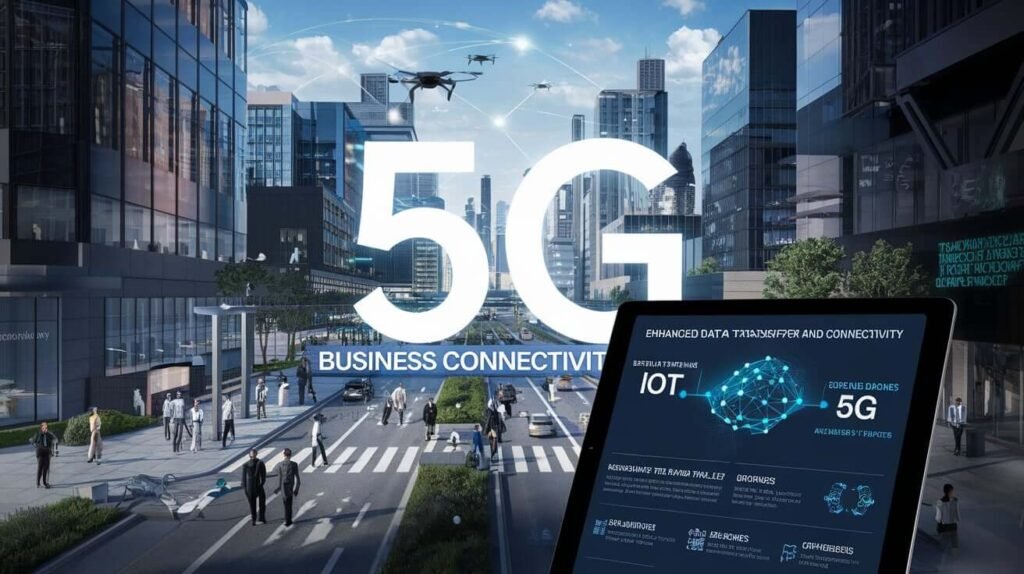
Enhanced Data Transfer and Connectivity
One of the most significant benefits of 5G is its ability to transfer large amounts of data quickly and securely. This is crucial for businesses that rely on real-time data for decision-making, such as in sectors like healthcare, finance, and manufacturing. With 5G, businesses can analyze data faster, allowing them to respond to market changes and customer needs in real time.
IoT and 5G Synergy
The integration of 5G with the Internet of Things (IoT) is creating new opportunities for businesses to harness the power of connected devices. With 5G’s enhanced connectivity, IoT devices can communicate more efficiently, enabling smarter homes, factories, and cities. This synergy between IoT and 5G is allowing businesses to collect more precise data, optimize resource usage, and improve decision-making processes across the board.
8. The Future of E-Commerce: Personalization and Immersive Experiences
The e-commerce landscape continues to evolve in 2024, driven by advances in technology and changing consumer behavior. As online shopping becomes more competitive, businesses must find ways to differentiate themselves by offering personalized and immersive customer experiences.
AI-Driven Personalization
Personalization is a key trend in the e-commerce space, with AI algorithms enabling businesses to deliver tailored product recommendations, personalized marketing messages, and dynamic pricing models. By analyzing customer behavior, preferences, and purchase history, AI can predict what products or services customers are most likely to buy, helping businesses increase conversion rates and foster customer loyalty.

Augmented Reality (AR) in E-Commerce
Another game-changer in e-commerce is the use of augmented reality (AR) to create immersive shopping experiences. Retailers are increasingly using AR to allow customers to visualize products in real-time before making a purchase. For example, AR applications enable users to “try on” clothes or see how furniture would look in their home environment. This not only enhances the customer experience but also reduces the rate of returns, as customers have a clearer idea of what to expect before they buy.
Voice Commerce
The rise of voice commerce is also reshaping how consumers shop online. With the growing popularity of smart speakers and voice assistants like Amazon’s Alexa and Google Assistant, more consumers are using voice commands to search for products and make purchases. This presents a new opportunity for businesses to optimize their websites and product listings for voice search, ensuring that they remain competitive in this rapidly evolving space.
9. Digital Payments: The Shift Towards a Cashless Economy
As businesses embrace new technologies, the way we pay for goods and services is also evolving. In 2024, the shift towards digital payments is accelerating, with more consumers and businesses opting for cashless transactions.
The Growth of Mobile Payments
The widespread adoption of mobile payment platforms like Apple Pay, Google Pay, and Samsung Pay is driving the shift towards a cashless economy. These platforms offer consumers a convenient and secure way to make purchases using their smartphones, eliminating the need for physical cash or credit cards. For businesses, accepting mobile payments means faster transactions, improved customer convenience, and increased sales.

Cryptocurrency and Blockchain Payments
In addition to mobile payments, the use of cryptocurrency as a means of transaction is gaining traction in certain industries. Blockchain technology enables secure, transparent, and decentralized transactions, making it an attractive option for businesses looking to reduce fraud and increase trust with customers. While cryptocurrency is not yet mainstream, its potential to revolutionize the payments industry cannot be ignored, especially as more businesses explore ways to integrate it into their operations.
10. Preparing for the Future: Embracing Technological Change
As we move further into 2024, it is clear that businesses must embrace technological advancements to remain competitive. From AI and IoT to blockchain and 5G, the intersection of technology and business is reshaping how companies operate, interact with customers, and drive growth. The companies that are quick to adopt and adapt these technologies will not only survive but thrive in the rapidly changing landscape.
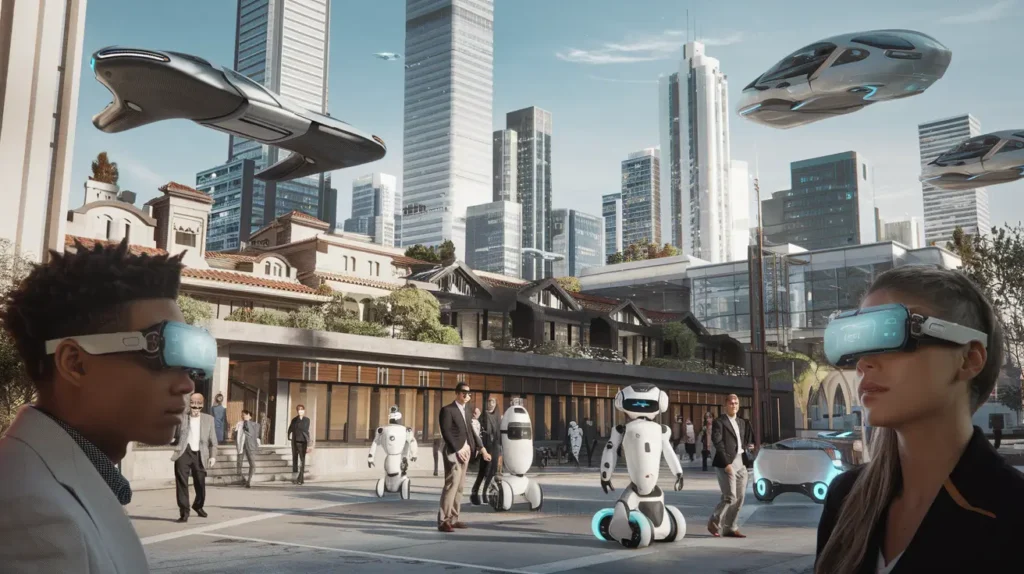
Business leaders must prioritize digital transformation, continuously assess emerging trends, and invest in the right technologies to stay ahead of the curve. By doing so, they can unlock new opportunities for innovation, streamline operations, and position their organizations for long-term success.
Final Thoughts: Navigating the Intersection of Technology and Business
In 2024, navigating the intersection of technology and business is more crucial than ever. As technological advancements continue to drive change across industries, businesses must stay agile, innovative, and forward-thinking. Integrating emerging technologies like AI, cloud computing, blockchain, and 5G can provide a competitive edge, streamline operations, and enhance customer experiences. However, the rapid pace of technological evolution also presents challenges, particularly in areas like cybersecurity and data management.
To succeed in this dynamic landscape, businesses need to embrace digital transformation, continuously invest in technology, and cultivate a culture of innovation. Those who adapt quickly will not only survive but thrive, securing long-term success in an increasingly tech-driven world.
Navigating the Intersection of Technology and Business: Frequently Asked Questions (FAQs)
1. How is Artificial Intelligence (AI) impacting business operations in 2024?
AI is transforming business operations by automating repetitive tasks, improving decision-making processes, and providing actionable insights from large datasets. AI-powered tools like predictive analytics, chatbots, and machine learning algorithms are helping businesses enhance efficiency, personalize customer interactions, and optimize internal processes.
2. What role does cloud computing play in business agility?
Cloud computing is essential for business agility as it allows organizations to store data and applications remotely, providing flexibility and scalability. Businesses can easily expand their operations, reduce overhead costs, and ensure better disaster recovery by leveraging cloud-based solutions. In 2024, cloud computing is also facilitating the rise of remote work and multi-cloud strategies.
3. How does blockchain benefit supply chain management?
Blockchain enhances supply chain management by increasing transparency, security, and efficiency. Businesses can use decentralized ledgers to track products from production to delivery, ensuring authenticity and reducing fraud. This level of visibility helps companies build trust with customers and partners.
4. What is the significance of 5G technology for businesses?
5G technology offers faster internet speeds, lower latency, and improved connectivity, allowing businesses to transfer data more quickly and securely. This is especially important for industries reliant on real-time data, such as healthcare, finance, and manufacturing. 5G also enhances the integration of IoT devices, enabling smarter business operations and data-driven decision-making.
5. How are automation and robotics affecting businesses in 2024?
Automation and robotics are revolutionizing sectors such as manufacturing, logistics, and service industries by reducing labor costs, increasing efficiency, and minimizing errors. Businesses are using robots for tasks like assembly and quality control, while service automation helps streamline customer interactions and back-office processes.
6. What trends are driving the future of e-commerce?
Key trends in e-commerce include AI-driven personalization, augmented reality (AR) for immersive shopping experiences, and the rise of voice commerce. These technologies allow businesses to provide tailored experiences, increase customer engagement, and optimize for voice searches, enhancing their competitive edge in the online marketplace.
7. What cybersecurity challenges do businesses face in 2024?
In 2024, businesses face more sophisticated cyber threats, particularly with the rise of remote work. To mitigate these risks, companies are adopting Zero Trust security models, where every access request is authenticated and encrypted. Additionally, businesses must comply with data privacy regulations like GDPR and CCPA to protect sensitive information and avoid fines.
8. How is technology contributing to business sustainability?
Technology is playing a key role in helping businesses achieve sustainability goals by optimizing energy consumption, reducing waste, and digitizing processes. Green technologies like renewable energy and energy-efficient machinery are being adopted in manufacturing, while digital transformation initiatives are reducing environmental footprints.
9. What is the future of digital payments?
Digital payments are growing rapidly, with more businesses and consumers opting for mobile and cashless transactions. Platforms like Apple Pay and Google Pay offer convenience and security, while blockchain and cryptocurrency are emerging as alternative payment methods that provide transparency and reduced fraud.
10. Why should businesses invest in emerging technologies?
Investing in emerging technologies allows businesses to stay competitive, enhance operational efficiency, and capitalize on new growth opportunities. By embracing innovations like AI, blockchain, 5G, and automation, companies can streamline processes, improve customer experiences, and position themselves for long-term success in a rapidly changing market.




